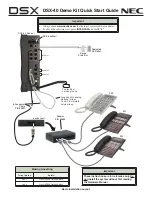
2.7
Calibrating the Sensor
Every sensor module is calibrated at the factory in a perfect-
world environment. However, hard and soft iron effects on your
vessel can distort the local magnetic field, causing errors in the
reported heading. These errors are minimized by mounting the
sensor module in a suitable location and are further removed by
GyroTrac’s autocalibration feature, which compensates for minor
magnetic distortions.
After installing the GyroTrac, you must calibrate the sensor as
described below and achieve a good calibration score to ensure the
highest degree of heading accuracy.
1. Select a calm day and a clear area. Avoid excessive
pitching and rolling, as this can distort the
calibration data.
2. Apply power to the ADCU and note your
approximate heading so that you will know when
you have completed a full circle.
3. Steer your vessel at a slow, steady speed through a
full circle that takes at least 2 minutes to complete.
(Try to time your turn so that it takes 30 seconds or
more to turn 90º.) After completing a full circle,
continue the process with a second circle. The
circles do not need to be perfectly round as long as
you make a complete 360º turn.
4. Once you have completed two full circles, your
GyroTrac should be calibrated. Check the
calibration score as described on the following
page.
You must calibrate the GyroTrac
sensor after installation so that it
can compensate for any magnetic
distortions.
The ADCU is equipped with a fuse
to protect against high-voltage
spikes. If the system is installed
correctly and power is available, but
the system is non-functional, refer
to Section 4.3, “GyroTrac-specific
Issues” on page 97
for instructions
on checking and replacing the fuse.
54-0147
40
TracVision G4 Technical Manual
Содержание TracVision G4
Страница 127: ......
Страница 133: ...Optional Rotating Card Display 54 0147 141 Template E 2 Rotating Card Display Panel Mounting 5 4 137 mm...
















































